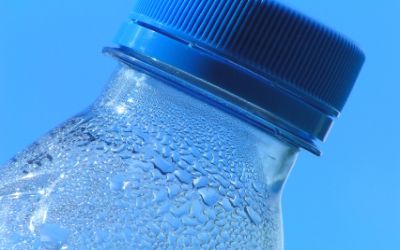June 27, 2011

by Charlotte Dieroff
With interest growing in high-protein diets and on-the-go convenience, high-acid, protein-fortified, ready-to-drink (RTD) beverages are becoming more popular. Previously, this was a niche segment catering to supplemental nutrition and muscle-building drinks; but, today protein drinks are considered mainstream, with offerings targeting sports performance, satiety, muscle recovery and hydration. Clear, high-protein, high-acid beverages are also hot, as demonstrated by products such as Fonterras WH2OLE functional water and Gatorades Recover line. Protein fortification has never been so transparent; however, not all proteins are suitable for high-acid RTD applications. Traditionally, high-acid beverages have been fortified with whey proteins, but soy protein is also an option.
Whey Protein
Traditionally, dairy proteins have dominated the high-acid RTD market with whey products being the best performers. Whey-protein concentrates (WPC) and whey-protein isolates (WPI) are soluble at low pH and are heat stable. Whey proteins are thus well suited for typical high-acid (pH 3 to 3.5), hot-fill processes. Furthermore, the clarity of whey protein increases as pH decreases, enabling the formulation of clear protein fortified beverages.
Not only is whey well suited for an acidic matrix, but it also offers premium nutrition. Whey proteins can have high protein levels with typical WPC at 30 percent to 80 percent protein and WPI at around 90 percent. Whey protein is a complete protein, containing all the essential amino acids the body needs for protein manufacture and metabolism. Important for building lean muscle mass, whey offers the highest level of branched-chain amino acids (BCAAs) (leucine, isoleucine and valine) of any food protein. BCAAs have the advantage of not needing to be metabolized by the liver first, and can thus quickly supply energy to muscles during exercise.
However, nutrition alone is not enough. RTD beverages need to be great tasting and shelf stable, which requires careful formulation. Whey-based RTD protein drinks can be difficult to formulate, but there are tricks to the trade. First off, adequate protein hydration directly relates to wheys heat stability. Whey protein must be completely hydrated prior to acidification steps to ensure the protein is completely solubilized. If not, the proteins will aggregate during the beverages heat-processing step and produce an unstable beverage. Secondly, when acidifying the beverage, its necessary to quickly move through the proteins isoelectric point, where the protein is the least soluble. At the proteins isoelectric point, the protein has equal negative and positive charges, and thus, it tends to aggregate and come out of solution. Holding the protein base for too long at the proteins isoelectric point results in a denatured, chalky beverage.
Another technical hurdle when working with whey proteins is they tend to be astringent at lower pH. Thus, a mixture of differing acidulants such as phosphoric, citric and malic acid is often used when formulating these products to balance the flavor profile and reduce tartness. An industry response to this formulation challenge was the development of pre-acidified whey products. These proteins require less acidulant to achieve the beverages target pH, thus minimizing astringency.
With the surge for clear, protein-fortified beverages, whey suppliers and researchers are busy developing new specialty proteins to further improve its clarity. The department of food science and technology at the University of Tennessee is taking a unique approach trying to bolster wheys clarity and heat stability by forming whey protein nanoparticles created by a unique microemulsion process.
Soy Protein
Soy protein is another option when fortifying high-acid beverages. It offers an alternative for consumers who are allergic to milk proteins and are lactose intolerant. In addition, soy protein is a good option when formulating protein-fortified vegan beverages.
Soy protein, like whey, is nutritionally complete. Soy protein is a high-quality protein, with a Protein Digestibility Corrected Amino Acid Score (PDCAAS) comparable to that of animal-derived proteins such as beef, milk and eggs. This score is used to rate proteins sources based on human amino acid requirements and protein digestibility in humans. Both whey and soy protein have perfect scores of 1.0. Soy also offers high levels of the amino acids glutamine and arginine, which are important for growth hormone release and building muscle.
Formulating with soy can also have the advantage of health-heart label claims. Much research has been conducted in the area of soy protein's potential to lower blood cholesterol and lower the risk of coronary heart disease (CHD). In 1999, FDA issued a health claim about soy protein and its effect on heart disease stating: "25 grams of soy protein a day, as part of a diet low in saturated fat and cholesterol, may reduce the risk of heart disease."
Historically, soy has taken a back seat to whey protein when formulating high-acid RTD beverages. First off, soy is not as soluble as whey protein in high-acid conditions, but it can be made heat stable with the addition of specific stabilizers such as pectin, xanthan and guar gum. It also poses formulation issues from a flavor and texture standpoint. Soy protein isolates have come a long way to rid their inherent beany flavor and gritty texture thanks to alcohol washing and improved milling technologies. A formulation advantage that soy has over whey is cost. Typically, plant-based proteins are cheaper to produce than animal-based proteins, making it an attractive component on the ingredient list.
Until recently, no commercially available soy protein has been able to produce transparent beverages. CLARISOY is a 100-percent soluble and transparent isolated soy protein designed to be used in beverage systems with a pH of less than 4.0. ADM signed an exclusive agreement with Burcon NutraScience, the company that developed CLARISOY, to manufacture, market and sell the specialty protein, which debuted this June at the National IFT Expo in New Orleans.
New Novel Proteins are on the Rise
Proteins have always been a hot topic, and with the rising cost of dairy proteins, novel plant proteins are being explored for high-acid RTD products. Plant-based functional proteins can offer more than standard nutrition and are cropping up everywhere. Potato and pea protein boast satiety benefits via their effect on gastrointestinal (GI) peptides. Rice enjoys its low-allergy status. Time will tell which of these proteins will be suitable for high-acid RTD systems. Who knows what you might find in your next protein drink maybe a little potato?
Charlotte Dieroff is a product developer at the International Food Network (IFN) and holds a bachelors of science in food science from Cornell University and a masters of business administration from Xavier University. Her background includes developing frozen desserts, and weight-loss and dry-mix beverages. Since 1987, IFN has provided new product development services to the supplement, nutritional products and food and beverage industries. (866) 778-5129.
You May Also Like




.png?width=800&auto=webp&quality=80&disable=upscale)